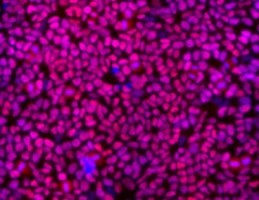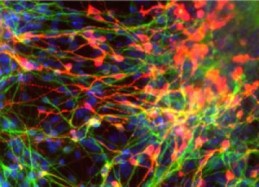Researchers have reported the creation of long-term, self-renewing, primitive neural precursor cells from human embryonic stem cells (hESCs) that can be directed to become many types of neurons without increased risk of tumor formation.
To produce the neural stem cells, the researchers added small molecules in a chemically defined culture condition that induces hESCs to become primitive neural precursor cells, but then halts the further differentiation process.

Cultured, self-renewing primitive neural precursors derived from human embryonic stem cells using molecule inhibitors (credit: UC San Diego School of Medicine).
Because the process doesn’t use any gene transfer technologies or exogenous cell products, there’s minimal risk of introducing mutations or outside contamination, the researchers said.
The scientists were able to direct the precursor cells to differentiate into different types of mature neurons. ”You can generate neurons for specific conditions like amyotrophic lateral sclerosis (ALS or Lou Gehrig’s disease), Parkinson’s disease or, in the case of my particular research area, eye-specific neurons that are lost in macular degeneration, retinitis pigmentosa or glaucoma,” said Kang Zhang, M.D., Ph.D.

Stained mature neurons, derived from precursor cells, expressing the neurotransmitter dopamine (credit: UC San Diego School of Medicine).
The same method can be used to push induced pluripotent stem cells (stem cells artificially derived from adult, differentiated mature cells) to become neural stem cells, Zhang said.
Their work appears in the April 25 early online edition of the journal PNAS.
Source: KurzweilAI.net
|